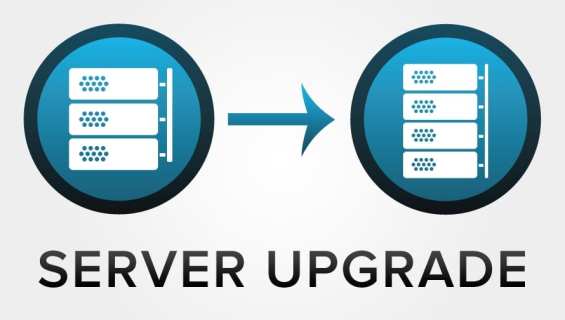Server hardware maintenance will maximize its potential which helps a business stay competitive equally avoids purchasing new server hardware. Server hardware upgrade can help keep a server performance required by the application.
Server RAM Upgrade
When upgrading a server focus in the RAM, it will make their computer run faster.
Server CPU Upgrade
It’s much more efficient to upgrade the CPU definitely will increase the speed of operation and, in cases, make more cores available so you can multitask with ease.
Server Storage Upgrade
Sometimes upgrading HDD drives will give you better performance, as you may get a faster read/write speed on your drive, which will make the access time on it faster. Additionally, upgrading to solid-state drives will give you a considerable upgrade in access time.
In short, server upgrades always require proper planning. You should remember to ensure your systems perform best:
Back Up
Your data, that is important. Follow standard practice to back all data up prior to an upgrade of your server. A general rule: Never make changes to a server — even a minor upgrade — before confirming there is a verified data backup. Whenever you power a server down, there is no guarantee it will come back online.
Change One at a Time
You may be eager to complete multiple upgrades simultaneously in a single shutdown, but tasks should all be performed separately. When multiple changes were made at once, the process of isolating the change responsible for the error is more difficult to find the wrong a day or two later. If a single change is introduced, it’s much easier to track the error.
Keep Close Watch
After upgrading a server, never assume it went off without a problem just because it booted back into its OS with no visible errors. This is a critical time to monitor log files, error reports, backup operations, and other functions more closely than ever. Leverage internal performance reports or third-party monitoring utilities to ensure everything is performing as it should.
Confirm the Operating System
Check the operating system of the server which is running. When multiple boxes host a collection of operating systems, by performing a quick audit of the system to be upgraded, you can confirm the OS is compatible and will be able to use the additional resources being installed.
Don’t Assume the Output
Whenever installing/Upgrading new hardware, don’t assume the device will plug-and-play well with the server’s operating system. Before ordering upgrades, search online and visit the server manufacturer’s forums to find out what issues other users encountered when installing the same component on the same OS. Also, confirm the component is listed on the OS vendor’s hardware compatibility list.
Always Save Records
Be sure to maintain log files for each server. Within the server documentation, make a note that the component was upgraded. Include the manufacturer, vendor and even the order number and serial numbers, whenever possible. It is also helpful to include warranty and support information. The more documentation you have, the easier it will be to isolate and repair issues that may arise in the future.
Need help in maintaining the server for your datacenter? Can’t seem to get your set up? Shoot us an email at Sales@navigatorsystem.com or give us a call at 9986288377.

